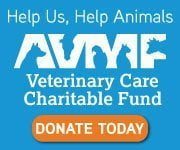Vaccines for Pets – The Fear Free Way
From our perspective (based on scientific data) vaccines save pets’ lives and are an important element of pet care.
From our pet’s perspective, however, based on their own past experiences, vaccines might seem something similar to this:
- Go through the huge portal to the unknown (vet hospital’s front door).
- Wait quietly as unfamiliar people, dogs, cats, smells, sounds, etc. come-and-go.
- Step onto the back of the big shiny alien (the scale).
- Stay still as a stranger touches me, then a different stranger holds me down, and then out of nowhere comes…OUCH! What the…?!!!
Our pets’ brain can’t help but learn through association that going to a veterinary hospital usually means discomfort or pain. And the next time that pet arrives at the hospital’s front door, their brain kicks-in the hormones usually reserved for truly life-threatening situations (think conditioned fight or flight response) and then our pet may experience fear, anxiety, or stress. Unless, of course, the pet is lucky enough to be a patient at CoastView Veterinary Hospital.
Can we change, or better yet – avoid, this conditioned biological response? Yes! We can. And we do.
Is it possible for pets to not only tolerate, but possibly (dare we say) enjoy their vaccination experience? YES! We’re making it a priority to do so.
So, how can we change this conditioned response – moving from fearful to Fear Free?
By honoring and following the Fear Free Philosophy and using a variety of proven tools and creative techniques to help “take the ‘pet’ out of petrified.”
Below you’ll find a few of the ways we create positive experiences for pets receiving vaccines here at CoastView Veterinary.
With patience and consideration of the pet’s comfort, history, and favorite high-value rewards, we create numerous Fear Free experiences for pets (and their people) on a daily basis.
Are you and your pet ready to try the Fear Free Way? You can also learn more about our vaccine services here. We sure hope so and we’ll look forward to seeing you and your pet at the next appointment!







